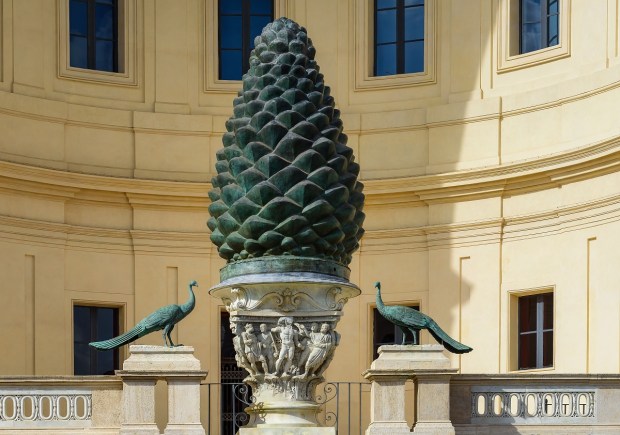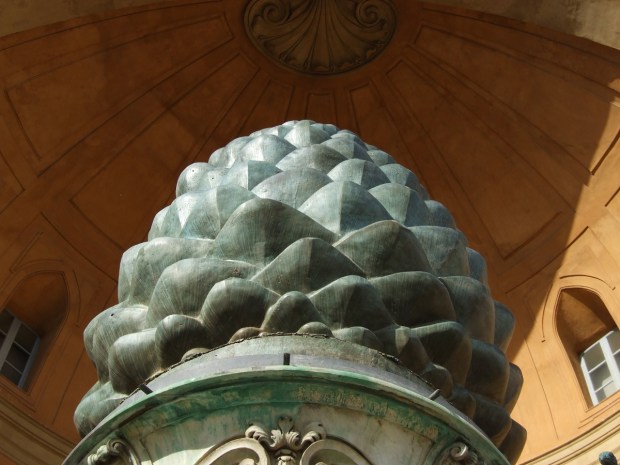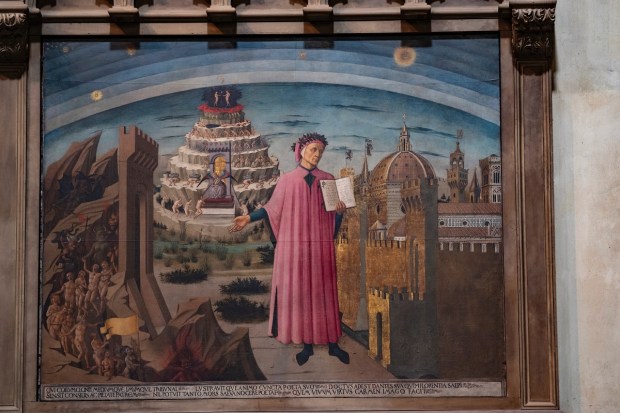It would probably take entire days to really appreciate every breathtaking work of art on display at the colossal collection of the Vatican Museums in Rome. Visitors can admire Michelangelo’s Last Judgement, the famous Gallery of the Maps, and an entire series of frescoes by Raphel, among other jaw-dropping works of art.
By the time viewers get to the Cortile della Pigna, literally Pine Cone Courtyard, they usually feel as if they've taken in several centuries of art history in one hour. Yet, still more intriguing artworks are found in this 1,000-square-foot courtyard marked by the calming sound of water sprouting from the Fontana della Pigna.

You can’t miss the iconic golden sphere sculpture by Arnaldo Pomodoro, a sphere containing an intricate system of wires that move with the wind – a reference to the moving forces of the cosmos. It’s equally hard to miss the “Pignone,” or “big pine cone” as locals affectionately call it, the giant bronze sculpture of a pine cone towering over the namesake fountain.
This colossal statue, measuring 13 feet tall, was created 1,800 years ago by Roman sculptor Publius Cincius Savius. Like many other artworks kept at the Vatican Museums, it is a testament to the different epochs of Roman history.

It was probably created in the 2nd century as part of decorations of the Temple of Isis and Serapis, a shrine dedicated to the Egyptian deities Isis and Serapis on the Campus Martius near the Baths of Agrippa. It is currently flanked by two bronze peacocks, replicas of statues that decorated the 2nd-century Tomb of Emperor Hadrian.
What is really striking about the statue is its colossal size and its life-like quality. The pine cone has been associated with the city of Rome since antiquity, and visitors can still admire the iconinc Roman Pine trees dotting the landscape of the Eternal City today. Historically, artistic depictions of the pine cone have represented eternal life and renewal. In the case of this statue, art historians have also associated it with spiritual enlightenment, as the pine cone resembles the brain’s pineal gland.

When Dante Alighieri visited Rome in the year 1300, he was so struck by the unusual statue that he ended up mentioning it in the Divine Comedy, Inferno, XXXI, 59: “His face was long and big like St. Peter’s pine cone.”
This suggests that by the year 1300 the Pine Cone was moved to St. Peter’s Square. We know for sure that in 1608 it was transported to this courtyard, at the top of a double ramp of staircases designed by Michelangelo. Shortly after the move, the courtyard began to be called “Pine Cone Courtyard.”
Today, visitors can be found marveling at the towering sculpture, much as Dante Alighieri did more than 1,000 years ago.
To visit the Vatican Musuems you can book your tickets online, with prices starting at 20 euros.



